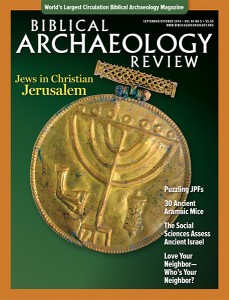In this book, a professor at Herzog College in Israel with a doctorate in archaeology from Tel Aviv University explores the correlation between archaeological finds and the Biblical narrative. The author’s position is quite clear: He “believes that no substantive contradiction exists between the two fields.” Meitlis seeks to “restore the Bible to its former stature as a reliable historical record.”
In the first chapter, the author explains why this book is needed—to show that there is no contradiction between Biblical text and the archaeological finds. He approaches his subject with a sense of mission: Since the 1980s too many scholars, he claims, have argued that there is a contradiction between the Bible and archaeology.
In his second chapter, he defines the chronological framework that is the focus of the study. Here, Meitlis claims that the common and traditional chronological framework is wrong and he presents an alternative view. According to him, the Middle Bronze Age continued until nearly the 1400 B.C.E.—and then the Iron Age begins. In effect, he has eliminated the Late Bronze Age and moved the beginning of the Iron Age back two centuries.
The third chapter deals with previous studies, beginning with excavations that took place at some of the principal Biblical sites. According to the author, the lack of destruction levels during the Late Bronze Age (1500–1200 B.C.E.) at these sites can be explained by his alternative chronology.
In the following chapters, Meitlis presents the archaeological evidence that in his opinion reflects the material culture of the Patriarchal period, the Settlement period and the period of the Israelite Monarchy.
Already a library member? Log in here.
Institution user? Log in with your IP address.

